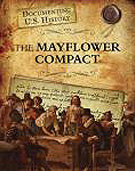Onward to 21st Century Regulation
Dr. John Bartlit
New Mexico Citizens
for Clean Air & Water
Column of December 7, 2014, Los Alamos Monitor
 Since the genesis of the human race, the advance of civilization has been defined
by the quality of its regulating. Yet, the word regulation evokes emotions as varied
as the looks people fashion on their faces.
Since the genesis of the human race, the advance of civilization has been defined
by the quality of its regulating. Yet, the word regulation evokes emotions as varied
as the looks people fashion on their faces. Regulation is older than written history. The first “regulation” of cavemen by cavemen was throwing rocks to fortify a point of disagreement. As the Stone Age drew on, a new means of enforcement appeared on the scene, namely, the stone axe.
Slowly, regulatory systems improved. Peer pressure had promising effects among small groups. As groups grew larger, tribal customs grew with them and evolved to be tendrils of religions.
Time passed. Regulation took more standardized forms, as in the Ten Commandments. Recall those brief decrees against killing, adultery, stealing, bearing false witness and coveting.
Businesses sprouted and spread. Entrepreneurs began to see they could build larger markets if they could reach customers farther from their shop.
But selling things at a distance first requires standardized and enforceable weights and measures and then a trusted means of money exchange—the dawn of banking. In other words, doing business at a distance requires more regulation and inspection.
Weights and measures were not yet standardized when our nation was forming. The lack of enforced standards hindered trade among the colonies.
Inevitably, a government court system must be added to “regulate” the unsavory folks who are proved to be short in their weights, measures or money exchange.
The Mayflower Compact is one of the great landmarks in the history of regulation and our nation. Nov. 11, 1620, feels wintry on the cramped ship lying at anchor in Cape Cod Bay. Pilgrims and their shipmates would soon set foot in a new land and stand, at long last, perfectly free of outside regulation.
At that seminal moment of decision, some of the passengers proclaimed they “would use their own liberty; for none had power to command them....”
Yet, wiser heads prevailed: the majority chose to establish a government. The Mayflower Compact was based on majority rule (taking into account that women could not vote) and the settlers’ allegiance to the king. It was in essence a contract in which the settlers consented to follow the compact’s rules and regulations for the sake of order and survival.
The covenant was signed by 41 of the ship’s 101 passengers. Our nation is deeply rooted, not in unmitigated liberty as is fancied by some, but rather in a shrewd blend of order and freedom.
To this day, that shrewd blend of regulation and innovation remains central to the uncommon prosperity our nation has built.
Think well on this formative counsel. The history of regulation is longer and more vital to economic success than is gathered from the slogans peddled by any sector today.
So, on we move into 21st century regulation. Technology burgeons at increasing speed. Industrial production grows in scope, scale, and sophistication, with increased means of polluting. Engineers design better and cheaper processes to make better products.
This is what engineers have always done.
Late 20th- and 21st-century technologies bring new capabilities in endless variety:
-
Swift, routine gathering of chemical data from Mars
Wireless and Internet data sharing
On-board diagnostics of vehicle systems—red lights call for a quick and thorough computerized inspection
Systems analysis
Commercial drones
This is what engineering now must do.
This is the engineering discipline for the 21st century.
This is regulatory engineering.